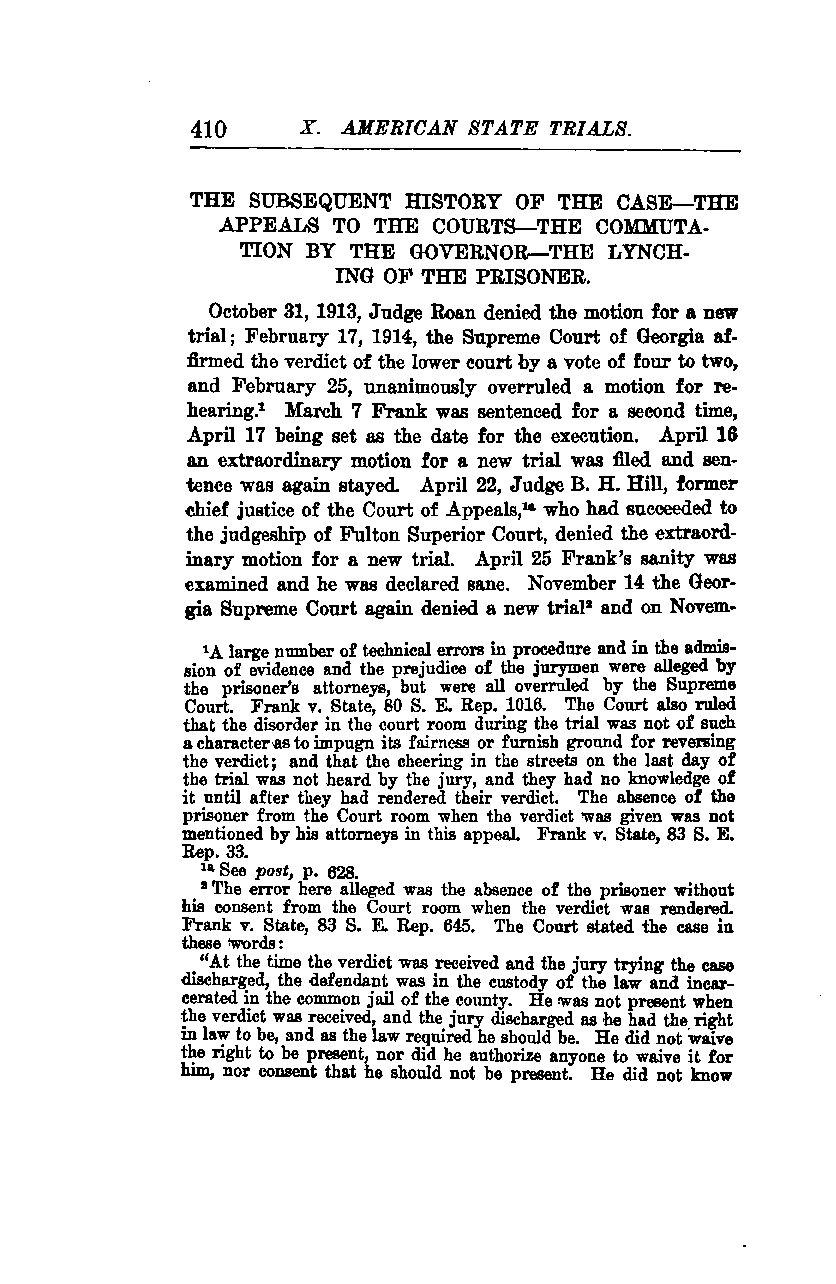Reading Time: 3 minutes [451 words]

Here is the translated text as follows:
410 X. AMERICAN STATE TRIALS.
THE SUBSEQUENT HISTORY OF THE CASE—THE APPEALS TO THE COURTS—THE COMMUTATION BY THE GOVERNOR—THE LYNCHING OF THE PRISONER.
On October 31, 1913, Judge Roan denied the motion for a new trial. On February 17, 1914, the Supreme Court of Georgia affirmed the verdict of the lower court by a vote of four to two, and on February 25, unanimously overruled a motion for rehearing. On March 7, Frank was sentenced for a second time, with April 17 set as the date for the execution. On April 16, an extraordinary motion for a new trial was filed, and the sentence was again stayed. On April 22, Judge B. H. Hill, former chief justice of the Court of Appeals, who had succeeded to the judgeship of Fulton Superior Court, denied the extraordinary motion for a new trial. On April 25, Frank's sanity was examined, and he was declared sane. On November 14, the Georgia Supreme Court again denied a new trial.
A large number of technical errors in procedure and in the admission of evidence, as well as the prejudice of the jurymen, were alleged by the prisoner's attorneys, but were all overruled by the Supreme Court. *Frank v. State, 80 S.E. Rep. 1016.* The Court also ruled that the disorder in the courtroom during the trial was not of such a character as to impugn its fairness or furnish ground for reversing the verdict; and that the cheering in the streets on the last day of the trial was not heard by the jury, and they had no knowledge of it until after they had rendered their verdict. The absence of the prisoner from the courtroom when the verdict was given was not mentioned by his attorneys in this appeal. *Frank v. State, 83 S.E. Rep. 33.*
The error here alleged was the absence of the prisoner without his consent from the courtroom when the verdict was rendered. *Frank v. State, 83 S.E. Rep. 645.* The Court stated the case in these words:
"At the time the verdict was received and the jury trying the case discharged, the defendant was in the custody of the law and incarcerated in the common jail of the county. He was not present when the verdict was received, and the jury discharged as he had the right in law to be, and as the law required he should be. He did not waive the right to be present, nor did he authorize anyone to waive it for him, nor consent that he should not be present. He did not know..."
---
*Note: The text ends abruptly and might be incomplete. Further context or pages may be necessary to complete the document accurately.